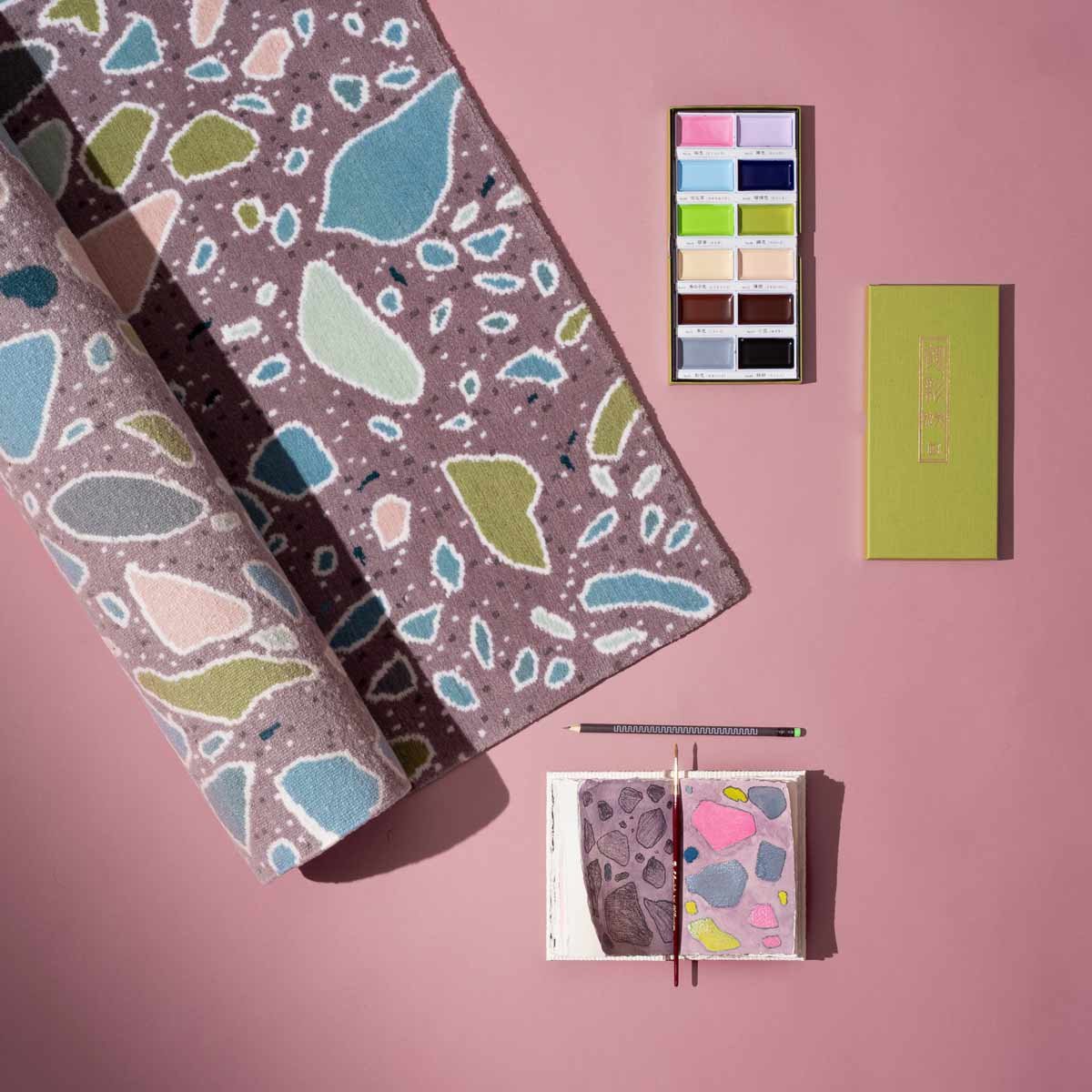Behind the Threads: The Making of a Custom Nepalese Rug
The Art of Crafting a Nepalese Rug: A Journey from Design to Completion
The Rug Design
The journey of a Nepalese rug begins with a design. The design is a blueprint, a plan that guides the weavers in their work. It outlines the pattern, the colors, and the rug size. The rug design can be inspired by anything - from the natural world to geometric patterns, traditional Tibetan motifs, and modern abstract forms. The design process is a creative endeavor where the designer's imagination is the only limit. In the Studio, we use several contemporary references for the designs, but mainly Sergio's soul gives life to the drawings.
The Selection of Wool
Once the design is finalized, the next step is the selection of wool. The wool used in Nepalese rugs is typically sourced from the highland sheep of Tibet, known as changpel. This wool is prized for its exceptional softness, durability, and natural resilience. The sheep that produce this wool have adapted to the Tibetan plateau's harsh climate and high altitudes, resulting in a dense, long, and strong fleece that provides excellent insulation and protection against extreme temperatures.
In the Studio, hundreds of wool "Poms" in our library are coded with the same wool used in the shop. Once the thread is selected, we know the color will be accurate (obviously within the limits of a manual dyeing process).
The Wool Dyeing Process
The raw wool undergoes a meticulous and time-honored craft of dyeing. After the raw wool is carefully washed and cleaned to remove impurities, it undergoes another critical step before dyeing: spinning. The clean wool fibers are hand-spun into yarn, which will later be used for the weaving process2. You are probably familiar with images of Gandhi spinning threads. Once the yarn is ready, it is soaked in large vats of water to prepare it for the dyeing process. Natural and synthetic dyes are carefully selected based on the desired colors and design.
The Weaving of the Rug
Handmade Rugs by Sergio Mannino Studio
The weaving process is where the design comes to life. The weavers use a unique knotting technique, simultaneously threading three warps through the weft. This allows for the blending of fabrics and colors directly on the loom. The knotting method used in Tibetan rug-making differs from that used in other rug-making traditions worldwide. This technique requires precision and expertise, as each knot must be tightly secured to ensure the rug's durability and longevity.
The Trimming
After the weaving is complete, the rug undergoes a process of trimming. This involves carefully cutting the excess wool from the rug's surface to reveal the design. The trimming process requires a steady hand and a keen eye, as it is crucial to maintain the integrity of the design while ensuring a uniform pile height.
The Washing
The final step in the rug-making process is washing. This involves thoroughly cleaning the rug to remove any remaining dirt or dust. The washing process also helps set the dyes, ensuring the colors remain vibrant and long-lasting.
The History of Nepalese Rugs
The carpet-making industry in Tibet stretches back hundreds if not thousands of years1. Tibetan rugs were initially created for practical purposes, serving as warm and durable floor coverings in the harsh Himalayan climate. Over time, the art of rug weaving evolved, and Tibetan rugs became renowned for their unique designs and exceptional quality. Today, the Tibetan diaspora in India and Nepal has established a thriving business in rug making.
The Difference with Other Asian Rugs
One of the distinguishing features of Nepalese rugs is the unique knotting technique used in their creation1. Unlike the Persian knot, the Tibetan knot remains uncut, resulting in an open pile or looped texture that adds a unique dimension to the rug. The Tibetan knot is larger and bulkier than the Persian knot, contributing to the rug's overall thickness and durability.
Creating a Nepalese rug is a labor-intensive process that requires skill, patience, and a deep respect for tradition. Each rug is a work of art, a testament to the craftsmanship and creativity of the weavers who bring them to life.







